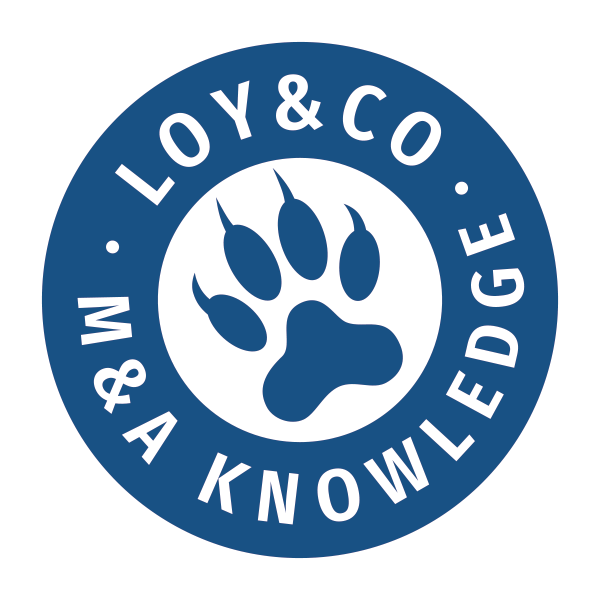

The M&A Process: 9 Steps on the Way to a Successful Company Sale
Mergers & Acquisitions processes are complex and demanding transactions in which opportunities and risks lie close together. The basis of a successful transaction is a professional mergers & acquisitions process, which has largely become the standard over the last 30 years and meets the expectations of market participants. Key success factors are the combination of a coherent strategy, a structured approach and the support and preparation by experienced and competent advisors. Here you will learn everything you need to know about the process and the central transaction phases of a M&A process – from the strategic planning phase to closing and completion.
Step 1: Strategic Planning Phase and Motivations
The M&A process begins with the strategic planning phase. This is about the motives underlying the decision to sell and thus the central goals to be achieved by the sale. If a group or a larger corporate conglomerate divests from a subsidiary, the focus is usually on concentrating on the core business and divesting from non-core activities. The purchase price obtained can then be used to acquire companies in the core business, for investments or to service liabilities. Typical objectives here are to achieve the highest possible sales price and to ensure that the transaction is carried out swiftly, safely and discreetly.
In traditional medium-sized businesses and family businesses, the complete sale of the company is usually sought in the absence of a succession solution within the family. In this case, several “systems” are affected: not only the company, but also the private assets and especially the family relationships. Here, too, the seller/owner usually attaches great importance to a speedy, secure and discreet process and would like to achieve the highest possible sales price to secure the family’s finances.
In addition, it plays a major role with family businesses that their personal circumstances and needs are understood and taken into account.

In addition, they usually attach great importance to ensuring that the corporate identity is preserved even after the acquirer has taken over the company, as well as to ensuring good prospects for further development and growth, especially for their employees. Since the motives and goals behind the sale of the company are of crucial importance, an experienced and professional Mergers & Acquisitions advisor should be involved already in this first step.
The classic sequence of an M&A process:
Step 2: Preparation of the sales documents: teaser and factbook
Before approaching potential buyers in the Mergers & Acquisitions process, important sales documents must be prepared. These include the so-called teaser and the factbook. The teaser is an anonymous short profile that is intended to spark the initial interest of potential buyers without naming horse and rider. The essential sales document, however, is the factbook, in which the company for sale is comprehensively presented. Among other things, it explains the company profile, the business model, the product range, the market situation and the financial data.

Although the factbook is sales-oriented and aims to present the company in a good light, it is essential to ensure that it is presented realistically. After all, all statements must be verifiable and stand up to the detailed insights that follow later during due diligence. Therefore, the seller/former owner of a company should not conceal possible weaknesses and risks, but proactively address them with appropriate countermeasures.
Already in this phase, when collecting and documenting the information, a digital data room should be prepared, which can be used later in the due diligence process. During this preparatory phase, the mergers & acquisitions advisor also works out a detailed project timetable together with the seller.
Step 3: Identification of Potential Buyers
Parallel to the drafting of the sales documents, the Mergers & Acquisitions team already conducts extensive research on suitable buyers, which are then compiled into a comprehensive longlist.
The focus is on three different investor groups, each of which invests according to its own criteria, some of which are different. A distinction is made here primarily between:
- strategic investors (such as competitors, customers and suppliers) and
- financial investors, which include, for example, private equity companies or investment companies.In addition there are
- wealthy private individuals, often former or still active entrepreneurs, but also family offices in which family businesses have pooled their assets.
- A management buy-out (MBO) is when the existing management acquires the company,
- when the company is acquired by a new management, it is referred to as a management buy-in (MBI). This option is mainly considered for companies with a rather lower enterprise value. Directing decisions.

Step 4: Addressing the Candidates

When drawing up the longlist, strategic rationale, financial strength and decision-making power are assessed, but also the relevant contact persons in the company with address, telephone number and e-mail address are researched. Ideally, their availability at the time of the approach is checked in advance so that valuable time is not lost due to holidays or business trips.
Personal preliminary talks can also be useful for important addresses in order to find out the basic interest without disclosing the target company. The actual approach to the potential buyers is then carried out quickly and, above all, simultaneously by e-mail. First, the anonymised teaser and a confidentiality agreement are sent. If a candidate is interested, he sends back the signed confidentiality agreement and then receives the detailed factbook.
In order to inform the prospective buyers about the planned further procedure and the requirements, they also receive the so-called procedure letter – either together with the factbook or a few days later. In addition, candidates are often offered a management presentation. In this presentation, which lasts about two hours, the prospective buyer introduces himself to the management of the target company and vice versa.
Step 5: Letter of Intent (LOI): A non-binding offer
If potential corporate buyers signal serious interest in acquiring the company (more rarely also in a merger with an “equally strong partner”), the negotiation phase can begin. The first step is the Letter of Intent (LOI), in which the candidate confirms its interest in buying the company in writing and submits an initial offer on the company with an indicative price. Although the LOI is purely legally a non-binding declaration of intent, it already expresses interest and also a certain commitment to the seller. The M&A advisor has the task of generating bidder interest and competition throughout the process leading up to the LOI, and in this way ensuring that bids are as advantageous as possible. A company valuation prepared by the seller’s advisor gives the seller additional certainty about the adequacy of the bids.

Step 6: Due diligence: Deep insight into the company.

In the due diligence phase, the prospective buyer gains a deep insight into confidential information of the company that is not publicly available. As a rule, all relevant documents are made available in a data room. These include balance sheets, controlling reports, company and credit agreements. In addition to a detailed examination of all financial, legal and tax documents, a site visit to the company is often planned – in the manufacturing industry, especially to the production facilities.
Step 7: Binding Offer: The binding price offer
After the due diligence and the comprehensive insight into the strategy and the figures, the strengths and weaknesses of the company, the buyer now has all the information he needs to make a decision. On this basis, he submits a binding price offer to the seller in the Binding Offer. However, the offer now submitted may differ from the indicative price originally stated in the LOI due to new information.

Step 8: Negotiation Phase

Now come the (contractual) negotiations in which, in addition to the price, other conditions and details are determined and anchored in the company purchase agreement. An example of this is any guarantees for which an upper limit (“cap”) is usually set, up to which the buyer can assert claims for damages. Since these negotiations are usually very extensive and complex, the support of mergers & acquisitions advisors and lawyers is indispensable. Negotiating skills, experience and expertise are essential in order to reconcile the usually differing expectations of the buyer and seller – especially the price expectations.
Step 9: Signing, Closing and Completion
Once both parties have reached agreement on the deal, there is nothing standing in the way of the formal conclusion of the M&A process. At the signing, the contracts are signed. The signing is followed by the public announcement of the sale of the company. The subsequent closing involves the actual completion of the transaction, i.e. the transfer of control of the company and the payment of the purchase price. However, if the company buyer is of a certain size in a certain market segment, approval by the Cartel Office may first be necessary to complete the acquisition. For the seller, the transaction is largely completed at this point.

Conclusion: The phases of a successful M&A process
The Mergers & Acquisitions process is a complex challenge consisting of numerous individual steps. In each transaction phase, the aim is to optimise the seller’s position in order to be able to achieve the desired goals. And for this, the highest level of professionalism is required in every phase – from the initiation to the integration phase: From the strategic planning phase, the preparation of the sales documents, the identification and approach of potential buyers, the letter of intent, due diligence, binding offer and the negotiation phase to the signing, closing and completion, and furthermore the post-merger integration. In order to successfully carry out and complete the sale of a company, it requires not only a well thought-out strategy and a professionally structured approach, but above all the support of loyal, experienced and competent Mergers & Acquisitions advisors.
Another topic that might also interest you: Asset Deal vs. Share Deal?

Your contact person
Markus Loy
Managing Director
T: +49 211 20 49 6000M: +49 151 40010026E: loy@loy-cf.deLoy&Co Corporate Finance GmbH
Bilker Straße 11
40213 Düsseldorf